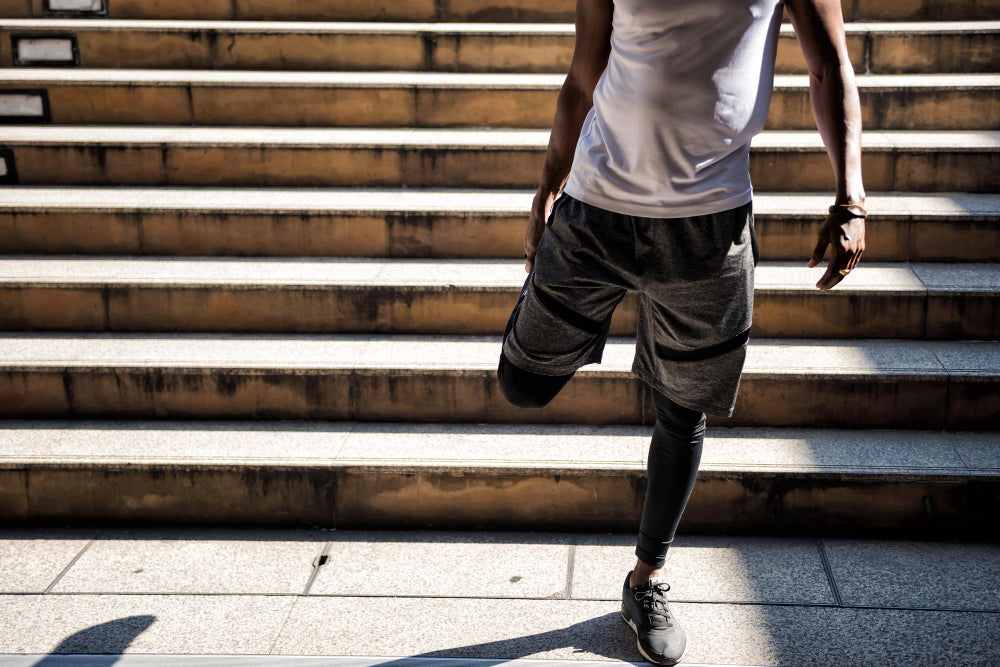Antalgic Gait: Symptoms, Causes and Treatment


Antalgic gait, also referred to as limping gait, is a walking trend that is an immediate response to pain. It normally results from injury or irritation in the lower extremities. The gait is altered as a protective mechanism in which the patient minimizes discomfort by spending less time bearing weight on the affected limb. An understanding of antalgic gait is important in the sense that it not only tends to evoke the presence of pain but also provides valuable insight into the root conditions causing the gait abnormality. Treatment of this disorder needs a comprehensive approach in accurate diagnosis, proper pain management, and therapeutic interventions aimed at the restoration of normal walking pattern and improvement of overall mobility.
An antalgic gait, also referred to as a limping gait, is a disorder characterized by an adaptive pattern of walking to reduce pain. The most prominent symptom of an antalgic gait is a limp, usually causing a shortened stance phase on the lower affected limb to reduce weight-bearing time. According to Dr. Michael Green, an orthopedic specialist, "Patients with an antalgic gait usually present with an asymmetrical walking pattern, with a considerably decreased duration of the stance phase on the painful side."

Other symptoms include muscle spasticity, a decreased range of motion in the involved limb, and an apparent lame gait. In actuality, these symptoms are more than mere pain; they indeed contain valuable information on the pathogenesis of the disorder. A timely diagnosis of these symptoms might provide effective management and treatment.
This antalgic gait may be due to numerous factors. They include musculoskeletal injury, such as a fracture, sprains, or ligamentous tears, and generally pathologic processes like arthritis, especially osteoarthritis. According to one review article in the Journal of Orthopaedic Research, about 70% of patients with osteoarthritis of the knee manifest some form of antalgic gait.
Other causes include certain infections, as in septic arthritis, and neurological disorders such as sciatica that may cause severe pain in the legs. According to Dr. Susan Lee, a neurologist, "Neurological disorders that compress or damage nerves can affect gait significantly and produce an antalgic pattern of gait, as the body tries to prevent pain from occurring."
Treatment of antalgic gait usually incorporates the treatment of the underlying disorder or cause of pain. In severe cases of injury, a common prescription is rest and physical therapy to enhance healing. Analgesics and anti-inflammatory medications are amongst pain management strategies used in alleviating discomfort, hence improving mobility. "Effective pain management is essential in restoring normal gait patterns," says Dr. Emily Brown, a pain management specialist.
Treatments under such conditions, like arthritis, may involve injections with corticosteroid medications and, at times, surgical interventions like joint replacement. This, more often than not, requires rehabilitation with physiotherapy to regain the lost strength and flexibility. According to a 2019 study in The Journal of Rehabilitation Research and Development, targeted physical therapy much enhanced gait patterns in patients after surgery.
Orthotic devices and supportive shoes build stability and reduce pain while walking. Neurologically, if it is a problem with the nerves, treatment to resolve the problem surgically or nonsurgically relieves the symptoms of antalgic gait.

The correction of an antalgic gait is possible if the root cause of the pain can be identified and the pain effectively treated. The common modes of treatment include:
Rest and Physical Therapy: Allowing the injuries to heal and building up muscle strength and flexibility.
Pain Management: Analgesics and anti-inflammatory drugs are prescribed to reduce pain and inflammation.
Orthotic Devices: Custom-made insoles or supportive shoes to give stability.
Injections of Corticosteroid: To reduce inflammation in cases with arthritis conditions.
Surgical Interventions: In severe cases, it involves replacement of the joint or repair of the damaged nerves.
Rehabilitation: Post operative physiotherapy focuses on the restoration of the previous pattern of gait.
The most common cause of gait disorders is musculoskeletal disorders, especially osteoarthritis. Osteoarthritis causes pain and stiffness in joints, which can significantly interfere with walking ability and usually leads to the development of an antalgic gait.
The main differences between antalgic and ataxic gait concern their aetiologies and characteristics:
Antalgic gait: A substitutive gait pattern adapted to minimize pain, usually resulting from musculoskeletal injuries or arthritis. Characterized by a decreased stance phase on the affected leg.
Ataxic Gait: This is due to different neurological disorders like cerebellar ataxia. It is characterized by staggering unsteady movements and lack of coordination; it usually features a wide base of support.
An understanding of the symptoms, causes, and treatments of antalgic gait is an important part of its proper management. Early diagnosis can provide very good prognosis if the appropriate therapeutic regimens are followed and individually tailored in accordance with expert medical advice and evidence-based practices. Keystones to long-term relief and improvement in mobility of subjects suffering from this condition include regular follow-up and maintenance therapy.










Plus get the inside scoop on our latest content and updates in our monthly newsletter.